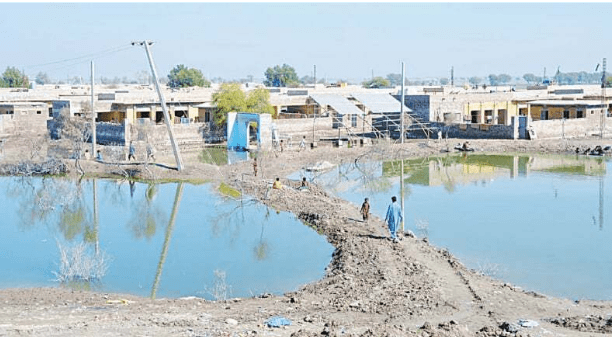ISLAMABAD: Pakistan expects roughly $13 billion from international donor agencies and banking partners to finance over 80% of the Resilient Recovery and Reconstruction Framework (3RF) over the next three years, as the cost of the flood protection plan rises by almost 51% even without its start.
In accordance with the post-disaster needs identified by international aid and UN organisations, the federal government is finalising an anticipated financing plan in cooperation with the pertinent ministries, agencies, and provincial governments. A total of $10 billion is needed, of which $7.9 billion would be used in Sindh and $2.2 billion in Balochistan.
The government has calculated that it will need to fund itself for roughly $40 billion over the next ten years. Long-term arrangements would need to be formed for this using a combination of international financing, reallocating funds allocated for current public sector development programmes, and public-private partnerships.
The estimated cost of the funding plan is Rs3.6 trillion ($16.16 billion), of which Rs730 billion would come from domestic resources and $13 billion (Rs2.9 trillion) from international development partners.
For the local resources, the federal, provincial, non-governmental organisations, etc. have to arrange for roughly Rs360 billion each.
The fundamental tenet of the strategy is the use of funds from climate justice after the international community declared at the end of the COP27 climate summit in Egypt that a fund would be established to aid nations in addressing the effects of climate change.
A finance plan would also be provided with the International Monetary Fund (IMF) within a few days based on these financing arrangements and conditions in order to allow policy-level discussions on the ongoing programme’s ninth review, which has been postponed for weeks.
For the current fiscal year’s flood restoration, the IMF had requested quarterly budget estimates.
A key component of the 3RF programme, according to sources in the water ministry, was the 10-year National Flood Protection Plan, which was approved by the Council of Common Interests (CCI) in 2017 and had an estimated cost of Rs332 billion over two phases, including Rs177 billion in the first phase lasting five years.
The cost of the plan is currently thought to have exceeded Rs 500 billion to pay for structural measures including boosting flood passing capacity, managing watersheds, and building reservoirs, in addition to a better flood warning system and institutional reforms.
The restoration of jobs and livelihoods, the recovery and reconstruction of vital assets, services, and infrastructure, and the improvement of governance and stakeholder capacity for reconstruction are the main goals of the framework in the medium term (the first three years).
A total of $18 billion has been estimated to be needed for rehabilitation, of which $2.76 billion will go toward social infrastructure, $1.1 billion toward health and education, $800 million toward physical infrastructure, $5 billion toward transportation and infrastructure, and about $4 billion toward agriculture and livestock. Additionally, $1.6 billion is earmarked for livelihood and social protection.
The World Bank, Asian Development Bank, United Nations Development Program, and the European Union recently conducted the Post-Disaster Needs Assessment (PDNA), with the assistance of the Pakistani government, and estimated the flood damage and loss at over $30 billion (around Rs6.5tr).
These eminent international organisations have already issued warnings about rising poverty rates, growing fiscal and external account deficits, and unrest in the political and economic spheres.
Based on these projections, Pakistan has asked a relaxation of the IMF’s requirements and funding for recovery and climate adaption measures under the banner of “climate justice.” To guarantee that the macroeconomic policy goals outlined in its $7 billion agenda are met, the Fund has now requested that the authorities make such allocations as part of the current year’s budget.
The PDNA report had exposed the shortcomings of Pakistani institutions and systems in terms of urban planning, water management, infrastructure maintenance, governance structures, and capacity for risk management and reduction, and it had noted that the devastating “one in a 1,000-year” flood had further exposed these flaws.
In a recent meeting, the National Assembly’s standing committee on finance revealed that, despite almost four months having passed since the catastrophic event, the federal and provincial disaster management agencies had operated in the absence of information about the actual needs of those affected and the provision of relief and rehabilitation support.

